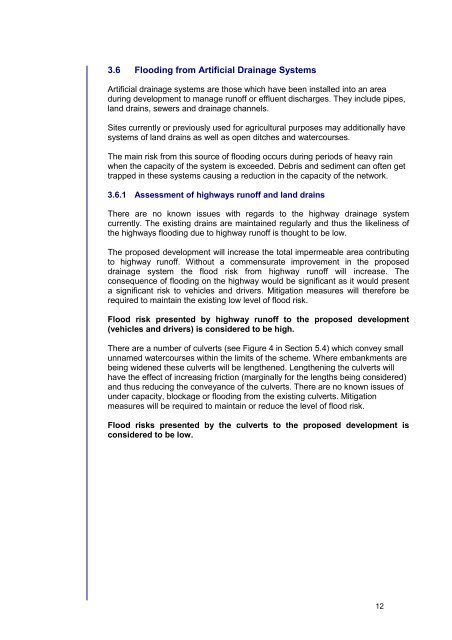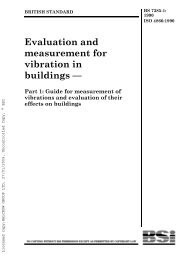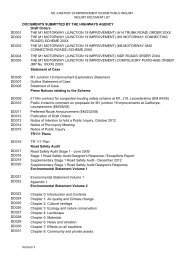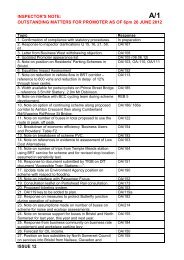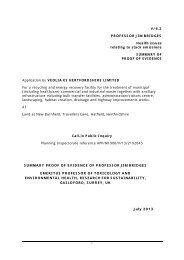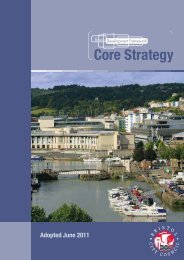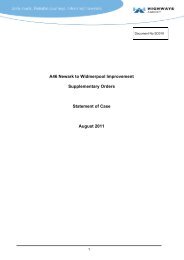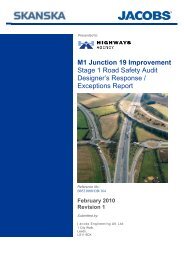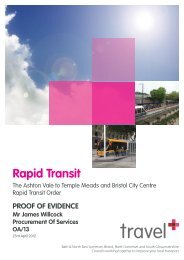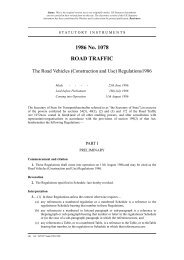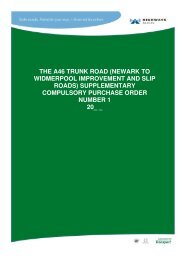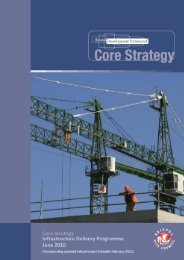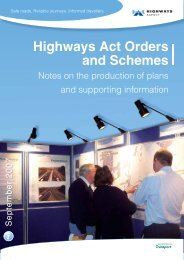Chapter 9: Road drainage and the water environment
Chapter 9: Road drainage and the water environment
Chapter 9: Road drainage and the water environment
You also want an ePaper? Increase the reach of your titles
YUMPU automatically turns print PDFs into web optimized ePapers that Google loves.
3.6 Flooding from Artificial Drainage Systems<br />
Artificial <strong>drainage</strong> systems are those which have been installed into an area<br />
during development to manage runoff or effluent discharges. They include pipes,<br />
l<strong>and</strong> drains, sewers <strong>and</strong> <strong>drainage</strong> channels.<br />
Sites currently or previously used for agricultural purposes may additionally have<br />
systems of l<strong>and</strong> drains as well as open ditches <strong>and</strong> <strong>water</strong>courses.<br />
The main risk from this source of flooding occurs during periods of heavy rain<br />
when <strong>the</strong> capacity of <strong>the</strong> system is exceeded. Debris <strong>and</strong> sediment can often get<br />
trapped in <strong>the</strong>se systems causing a reduction in <strong>the</strong> capacity of <strong>the</strong> network.<br />
3.6.1 Assessment of highways runoff <strong>and</strong> l<strong>and</strong> drains<br />
There are no known issues with regards to <strong>the</strong> highway <strong>drainage</strong> system<br />
currently. The existing drains are maintained regularly <strong>and</strong> thus <strong>the</strong> likeliness of<br />
<strong>the</strong> highways flooding due to highway runoff is thought to be low.<br />
The proposed development will increase <strong>the</strong> total impermeable area contributing<br />
to highway runoff. Without a commensurate improvement in <strong>the</strong> proposed<br />
<strong>drainage</strong> system <strong>the</strong> flood risk from highway runoff will increase. The<br />
consequence of flooding on <strong>the</strong> highway would be significant as it would present<br />
a significant risk to vehicles <strong>and</strong> drivers. Mitigation measures will <strong>the</strong>refore be<br />
required to maintain <strong>the</strong> existing low level of flood risk.<br />
Flood risk presented by highway runoff to <strong>the</strong> proposed development<br />
(vehicles <strong>and</strong> drivers) is considered to be high.<br />
There are a number of culverts (see Figure 4 in Section 5.4) which convey small<br />
unnamed <strong>water</strong>courses within <strong>the</strong> limits of <strong>the</strong> scheme. Where embankments are<br />
being widened <strong>the</strong>se culverts will be leng<strong>the</strong>ned. Leng<strong>the</strong>ning <strong>the</strong> culverts will<br />
have <strong>the</strong> effect of increasing friction (marginally for <strong>the</strong> lengths being considered)<br />
<strong>and</strong> thus reducing <strong>the</strong> conveyance of <strong>the</strong> culverts. There are no known issues of<br />
under capacity, blockage or flooding from <strong>the</strong> existing culverts. Mitigation<br />
measures will be required to maintain or reduce <strong>the</strong> level of flood risk.<br />
Flood risks presented by <strong>the</strong> culverts to <strong>the</strong> proposed development is<br />
considered to be low.<br />
12


